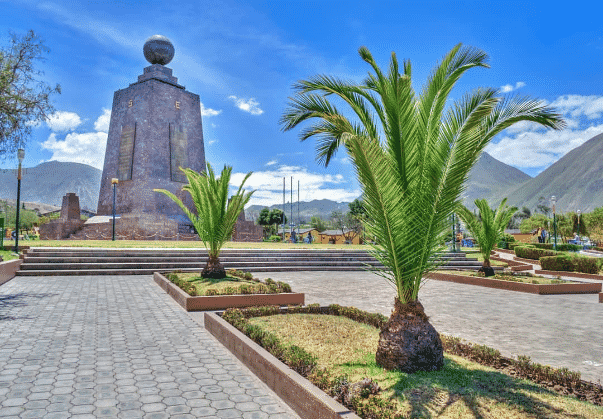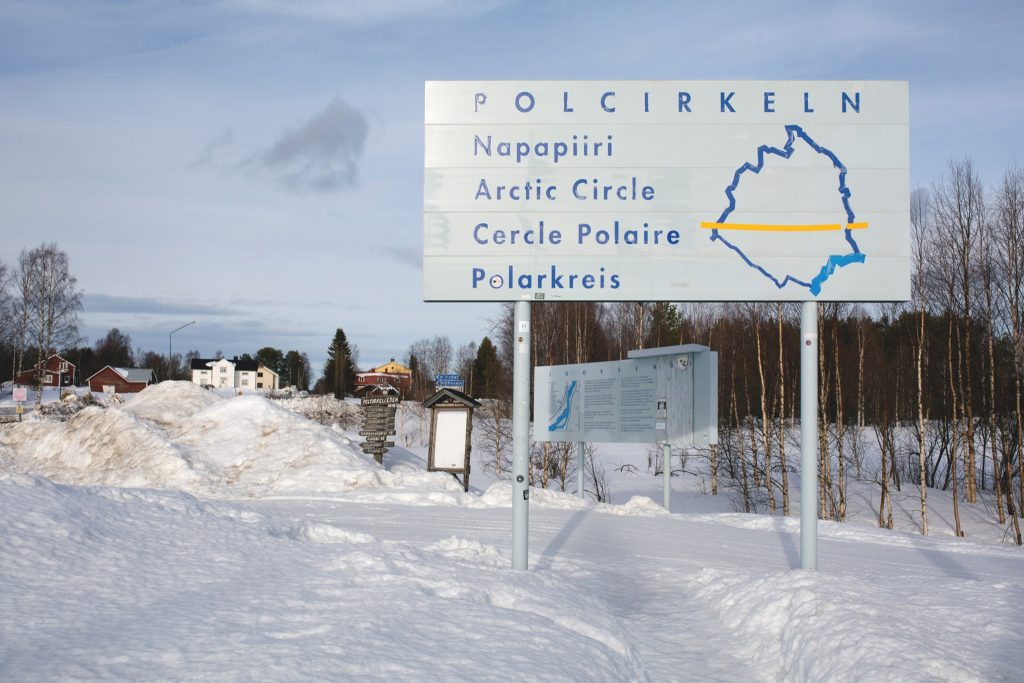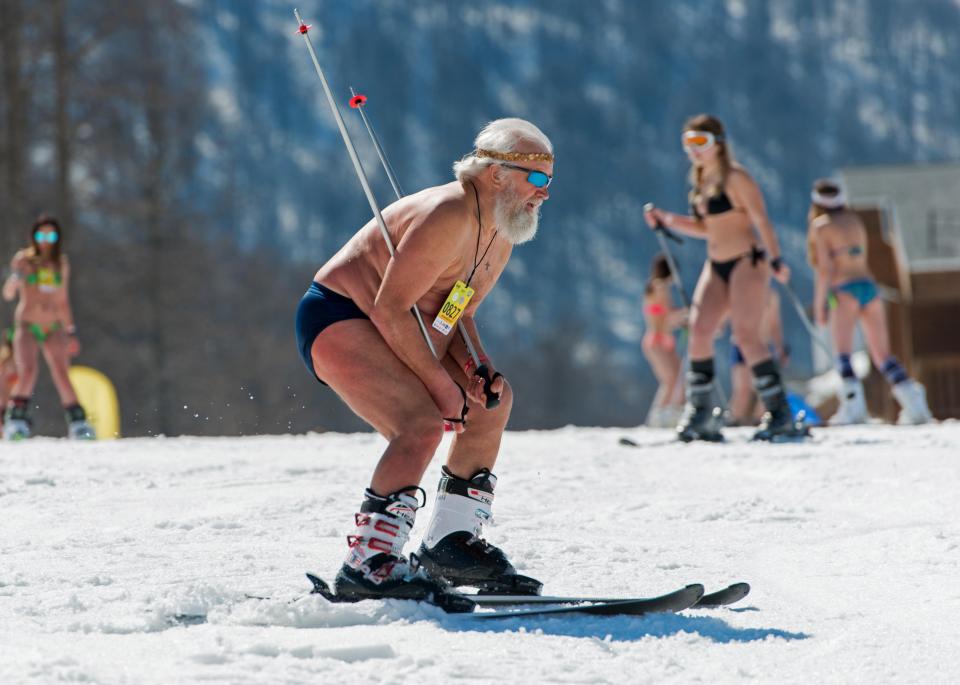
There are many different ways of dividing the people of the world into two groups. Men vs. women, East vs. West, K-selected vs. r-selected, industrialised vs. developing, whores vs. gangsters. This essay introduces another: equatorial mentality vs. polar mentality.
Equatorial climes, as anyone who has been to the tropics will know, are hot. Sunlight beats down directly from above. Near the Equator, it’s often above 20 degrees Celcius even at night. Sometimes living there can feel like living in a greenhouse.
Polar climes, by contrast, are cold. Sunlight strikes the surface of the Earth from the side. In wintertime, cities above the Arctic Circle have days where the Sun does not rise above the horizon at all (the “Polar Night”). This is where the real tundra begins, where the climate can only support small trees and bushes.
Contrary to popular belief, there’s more to the global temperature gradient than the simple fact that polar climes tend to be less sunny. For example, some cities in the Congo and Equitorial Guinea get only 1,500 yearly sunshine hours, whereas even Stockholm gets 1,800. The intensity of the sunlight is more important, particularly the intensity of sunlight per square metre.
Not every latitude of the surface of the Earth receives the same intensity of sunlight. Near the Equator, where the rays of the Sun strike the surface of the Earth at right angles, the sunlight is the most intense. The further one goes from the Equator to the poles, the more obtusely the sunlight strikes the surface, and the less intense it becomes.
The fact that the intensity of sunlight varies depending on latitude has immense ecological consequences – and, thereby, ethological consequences.

Because the sunlight is more intense at the Equator, and because the food chain is based on sunlight, the intensity of life is also greater there. Strong sunlight and warm temperatures are the most conducive to life, and so the Equator tends to feature jungles and rainforests that are teeming with insects and animals. This life must compete against other life for space to live.
At the Equator, therefore, the immediate challenge for anything living is against other living beings. Nearer the poles, by contrast, the immediate challenge is against the environment. There is much less life per square metre, and so much less danger from predators and parasites. The main dangers there are the cold and lack of easy food supplies.
This means that a different set of behaviour patterns had to evolve to meet the challenges of equatorial climates, as compared to polar climates. These behavioural patterns evolved alongside particular mindsets. There is an equatorial mindset that is more compatible with equatorial behaviour patterns, and there is a polar mindset that is more compatible with polar behaviour patterns.
The equatorial mindset doesn’t think ahead. There are no winters near the Equator, so there is no possibility of freezing to death. As such, there is no need to stack firewood for the winter, or to build a solid, warm, airtight house. Fruit is plentiful all year round in the tropics, so there’s no need to plan for the long-term storage of it. As such, there is no evolutionary pressure selecting for long-term thinking.
The polar mindset, by contrast, is always thinking ahead. It has to. Polar winters will kill everything not prepared for them. It’s common for Northern Europe, parts of North America and parts of Northern Asia to experience winter temperatures below -30 Celcius. What’s worse, winters in such places can last for six months. Anyone who doesn’t plan adequately for such weather will die.
These contrasting mindsets explain the contrasting impressions that some people make on each other.
The equatorial mindset is that, if there’s nothing to do, just chill out. Tomorrow will be much like today so, if there are no pressing matters, one should just take it easy and not risk overexertion. This is why people in Equatorial countries are often found sleeping during the middle of the day.
This is often interpreted as lazy by the polar mindset. The reality, however, is that when it’s hot, it can be dangerous to use too much energy. Heatstroke is an ever-present threat in tropical regions. Anyone who pushes themselves too hard is liable to pass out. So taking it easy whenever possible makes sense near the Equator.
The polar mindset, by contrast, is to always keep oneself busy. Sooner or later, winter will come, so if there are no pressing matters, one should prepare. Chop firewood, fix the house, gather food – and do it now because it will soon be too cold and dark. This is why people in Europe, North America and Northern Asia work long hours. The polar mindset doesn’t feel comfortable unless it’s working.
This is often interpreted as neurosis by the equatorial mindset. ‘We only have one life, so why not relax and enjoy it?’ reasons the equatorial mind, which doesn’t understand why the polar mind works so hard when the final reward for all of us is death. The hunger of the polar mind to achieve things and to impose order upon the world seems inhuman to the equatorial mind.
Like feminine and masculine, the equatorial mindset and the polar mindset will often clash. The polar mindset tends to accumulate more money, and this provokes resentment in the equatorial mindset. The equatorial mindset has a tendency to act impulsively, and the violence and theft that results provokes resentment in the polar mindset.
The equatorial mindset vs. the polar mindset is one of the great divisions in the human species, and understanding it goes a long way to understanding human behaviour.
*
If you enjoyed reading this essay/article, you can get a compilation of the Best VJMP Essays and Articles from 2021 from Amazon for Kindle or Amazon for CreateSpace (for international readers), or TradeMe (for Kiwis). Compilations of the Best VJMP Essays and Articles of 2020, the Best VJMP Essays and Articles of 2019, the Best VJMP Essays and Articles of 2018 and the Best VJMP Essays and Articles of 2017 are also available.
*
If you would like to support our work in other ways, subscribe to our SubscribeStar fund, or make a donation to our Paypal! Even better, buy any one of our books!



